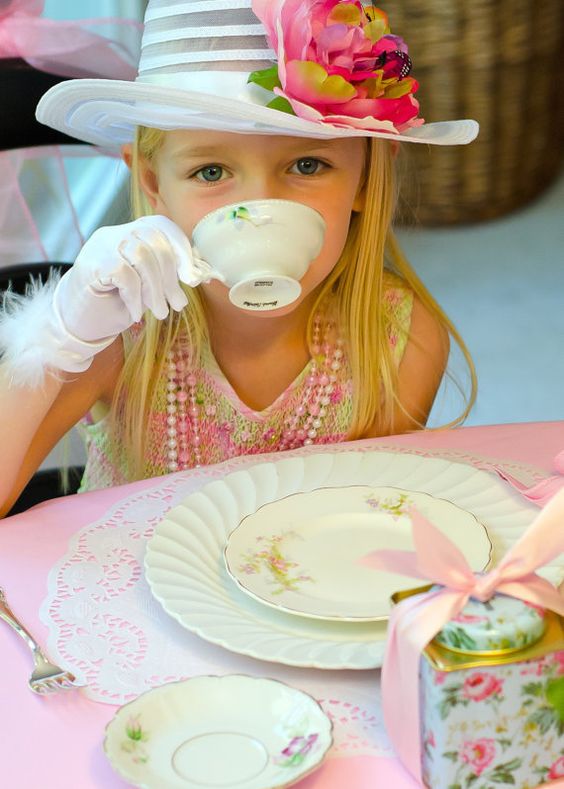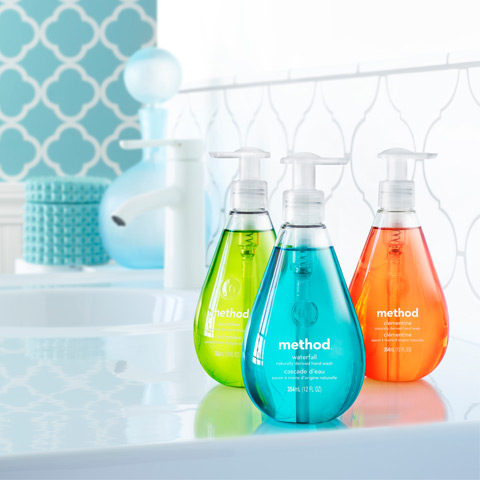You are currently viewing a placeholder content from YouTube. To access the actual content, click the button below. Please note that doing so will share data with third-party providers.
Wha Me Eat?
You are currently viewing a placeholder content from YouTube. To access the actual content, click the button below. Please note that doing so will share data with third-party providers.
BYE BYE SMARTPHONE
Today I would like to share with you a post written by
Deborah, a blogger
who I really appreciate.
She has swapped her ifone for a normal mobile phone, doesn’t that sound scary?
You can read what she thinks about it
here.
In any case, I am totally thrilled by this article and am now finally thinking about giving my ifone the off-bottom for ever…
Making the Connection
https://vimeo.com/15849273
Spring cleaning with organic products
All over the rainbow – Clean & happy
I have been cleaning with Method products for a year now. For a long time I even imported them from London (where they are available at the Wholefood Store in Picadilly Circus), but now they are FINALLY available in Switzerland.
Already used and found to be SUPER:
The ecological colored hand soaps in drop form are simply terrific. My skin is protected because they are free of so-called parabens (artificially produced preservatives) and my nose is pampered by the wonderful different fragrances – e.g. French Lavender, Pink Grapefruit or Sea Minerals and many more. 100% free from animal testing. Neither the end product nor individual ingredients have ever been tested on animals.
As well as the two floor cleaners: biodegradable, wax-free and toxin-free. They both smell so clean and fresh that you almost want to eat off the floor :-).
I particularly love the bathroom cleaner – it actually makes cleaning the bathroom fun!
Other Method products are already waiting to be used in my cleaning cupboard.
The story
The company Method was founded over ten years ago by flatmates Adam Lowry and Eric Ryan in California with the aim of producing stylish cleaning products that you no longer want to hide away in the cleaning cupboard – and that are also produced sustainably and fairly.
From ‘people against dirty’ – for ‘people against dirty’
Method’s ecological products have been developed for people who want to have more fun when cleaning. They clean like hell and smell simply heavenly. The packaging is made from 100% recycled PET and is easy to dispose of. The beautiful design will be the new eye-catcher in any bathroom or kitchen.
Clean
Method uses powerful, natural-based formulations that give dirt a leg up. The green ingredients are not only innovative but also effective.
Safe
Method’s greenskeeping team looks closely at every ingredient before it goes into the bottle. This guarantees that they are well tolerated by humans and animals.
CRADLE TO CRADLE®-CERTIFIED
cradle to cradle® certification is the highest benchmark for environmentally friendly product design, evaluating formulation safety, environmentally friendly packaging design + responsible manufacturing processes.
Method has the world’s only full range of “cradle to cradle®”-certified cleaning products.
What are you waiting for? Turn your household into a clean & happy Method household!
Where to buy?
In all Coop City branches and Coop megastores
www.methodhome.ch/coop
online at:
www.grünerleben.ch
www.leshop.ch
Here is also the test with great results:
http://produkt-tests.com/method-reinigungsmittel-im-test/
www.methodswitzerland.ch
Cowspiracy-The Sustainability Secret
Order your vegan handbag from Vegangle
Animals are not only used for food, but also for clothing, carpets and cushions. The suffering behind these products is often forgotten.
Leather is more than just a waste product from the meat industry. In the meantime, leather production has become a lucrative branch of business in its own right.
Some very toxic chemicals are used to make leather from the skin of an animal, transforming the natural product into a material that must be treated as hazardous waste after use! The global leather industry slaughters over a billion animals every year and processes their hides into clothing, fashion items, furniture, interiors and accessories.1 The greater the demand for leather, the greater the butcher’s profit when selling the hide. This makes animal factories more financially attractive.
How natural is leather?
Only around one third of a slaughtered farm animal ends up on Swiss plates. The remaining two thirds – skin, bones, fat and offal such as liver, spleen, heart and lungs – are considered by-products and are disposed of or further processed. The most important economic by-product of the meat industry is the skin of the animals.2
The hides of cows from the dairy industry are also processed into leather as soon as the productivity of the animals decreases. The hides of their children, bred for the production of veal, are processed into expensive calfskin.
Where does leather come from?
The majority of the leather products sold come from cow and calf hides. However, leather is also made from the hides of horses, sheep, lambs, goats and pigs, which are killed for their meat. Other animal species are hunted and killed for their fur and skins alone. Zebras, bison, water buffalo, wild boar, kangaroos, elephants, eels, sharks, dolphins, seals, walruses, frogs, turtles, crocodiles, lizards and snakes also fall victim to this cruel business.
Kangaroos are slaughtered by the millions every year because their skin is considered a first-class material for football boots.3 And although the Australian government requires hunters to shoot the animals, orphaned, young and injured animals are to be decapitated or hit hard on the head to “destroy the brain”, according to the government. After football star David Beckham learned about these cruel methods, he switched to shoes made of synthetic materials in 2006.4
Animal welfare
Most leather goods are made from the skin of cattle (usually calves). Up to 80% of these come from “dairy cows”.5 Accordingly, in the case of leather products, it is accepted that the animals have been kept in accordance with foreign animal welfare regulations. Too little space, too little light, antibiotics, castrations and removal of horns without anesthesia, etc. Then there is the transportation to the slaughterhouse and the slaughter. Soft leather from young calves is particularly sought after. The younger the better: sometimes the leather comes from calves that are only one hour old, or from slaughtered pregnant dams.
Leather as a health risk
Once the animals have been slaughtered, their hides are tanned. Nowadays, 90 percent of this is done with chromium, which means that chromate is released into the wastewater. Chromate contains chromium VI compounds, which can lead to various forms of poisoning (0.5 g to 1 g are fatal) and genetic damage.6 In addition, there are other manufacturing processes in which, for example, aluminum, iron, zirconium, phenol, cresol, naphthalene as well as oils and coatings are used. This not “only” has an impact on the environment, but also on people: Higher susceptibility to leukemia in the vicinity of tanneries. Tannery workers account for more than half of those affected by testicular cancer.7
Today, there are just eight tanneries left in Switzerland. Of these, three produce industrially with around 20 employees, and five are more artisanal with one to two employees.8 The majority of leather sold in Switzerland therefore comes from abroad. Due to strict environmental protection regulations in Switzerland and Germany in particular, tanning has shifted to low-wage and developing countries.
The risks of the leather industry today are therefore borne by workers in developing countries such as India, China, Vietnam, Bangladesh and Brazil. Due to the frequent lack of hazard warnings about carcinogenic chromium(IV) compounds, which also cause painful allergies, people in tanneries in these countries wade through chromium and waste water and sometimes obtain their drinking water from contaminated rivers and groundwater sources.
Although all organic or test seals stipulate that chromium(VI) must not be found in leather at all, this requirement cannot be enforced in practice. A study by the Federal Office of Consumer Protection and Food Safety (BVL) tested almost 600 different products for compliance with the chromium(VI) limit value – almost half were contaminated with chromium(VI)!9 The highest exceedances of the limit value were measured in leather shoes, where the carcinogenic substance was found in every third shoe. Similarly problematic chromium compounds were detected by Stiftung Warentest in baby shoes and work gloves.10 The magazine “Ökotest” has also regularly downgraded leather products for years due to their harmful chromium compounds.11 The TV report “Toxic shoes” by the NDR magazine 45 Min from 14.05.2012 found toxic chromium salts everywhere in Indian tanneries, which pollute rivers and the environment, while the population suffers from lifelong chromium allergies.12
Ecology
In addition to the health risks to all those involved in production, leather tanning with azo dyes, chromium salts and pentachlorophenols (PCP) naturally also has a negative impact on the environment. In addition to toxic substances, tannery wastewater also contains enormous quantities of other pollutants such as proteins, hair, salts, lime sludge, sulphides and acids. A chrome tannery wastes over 55,000 liters of water and produces up to 1,000 kilograms of solid waste (e.g. hair, meat and edge waste) and large amounts of toxic sludge per ton of hide processed.13
Vegetable tanning?
Tanning animal skins with plants takes considerably more time, and therefore more energy and water, which has a negative impact on the overall environmental balance. In addition, vegetable-tanned leather is usually much firmer and is therefore not suitable for every leather article. Gloves, for example, should be fine and have a good grip. Even vegetable-tanned leather can only achieve this with chemical additives. Although these substances do not have to be indicated on the label, such leather articles are given a so-called “eco-label”.
How can I tell the difference between leather and artificial leather?
Meanwhile, alternatives made of artificial leather already look deceptively real and it is not always easy to distinguish leather from artificial leather. The following tips will help you decide:
Leather also has its very own smell, which does not occur with artificial leather.
What can you do?
Animal-friendly alternatives include cotton, linen, rubber, Chinese grass, canvas and synthetic fabrics. Chlorenol (“Hydrolite” at Avia, “Durabuck” at Nike) is an interesting new material that is characterized by its breathability and is used in the production of sports and hiking shoes. It wraps around the foot with the same elasticity as leather, provides good support and can be machine washed. Alternative materials are usually cheaper and do not contribute to the mass slaughter for meat or the wild hunting of animals with beautiful skin. Ask retailers for leather-free items and encourage designers and manufacturers to produce shoes from alternative materials.
If you are buying a vehicle, find out in advance about car brands that offer leather-free models.
You can find leather alternatives almost anywhere you shop. Various labels sell leather-free handbags, purses and shoes.
Online at Veganangle or in the beautiful showroom in Zurich’s Seefeld district
you can buy leather-free and sustainably produced handbags, shoes and clothing.
Footnotes:
1 Food and Agriculture Organization of the United Nations, Slaughtered/Production Animals 2011, FAOSTAT Database, (24 Apr. 2013).
2. http://www.lid.ch/de/medien/mediendienst/artikel/infoarticle/17065/
3 Hofmann, René (2008): Kangaroos on your feet, Süddeutsche.de,http://www.sueddeutsche.de/sport/fussballschuhe-kaengurus-an-den-fuessen-1.784197 (08.05.2013)
4. http://www.independent.co.uk/news/uk/this-britain/beckham-hangs-up-his-boots-the-ones-made-out-of-baby-kangaroos-343287.html
5 Thomsen, L., Tierliche Inhaltsstoffe und ihre Alternativen, 2nd revised edition, (Veganissimo 1), published by FACE IT! People for Animal Rights, Kiel 1996, p. 71.
6. chemistry in the closet. The eco-textile book. S. 254
7. http://www.test.de/Chrom-VI-in-Leder-Immer-noch-ein-Risiko-4560494-0/
8. http://www.miga.org/documents/TanningandLeatherFinishing.pdf
Further information:
Comprehensive list of sources of leather-free products in the USA and England from PETA. A list of vegan shoe manufacturers is also available on Facebook. Background information on the topic of leather can also be found at Peta http://leder.peta.de/
Source: https://www.veganangle.com, http://swissveg.ch
EMPOWERMENT at the Futur Forum Lucerne
The vegan tea party
Staged for your children!
A small vegan tea party needs a lot of doll crockery, which can be found at
En Soie
or
Ikea
(
imitation glass
& real
ceramic
). Lots of soft toys are also a must at a vegan tea party: Exactly this peaceful
piggy mommy
with her
three baby pigs
or rabbits like the one on the far left in the picture can be found
here
and here. Incidentally, we found the two wooden chairs on the street here in Zurich. The small round table is from a second-hand store. By the way, cake is a must with tea, or would you prefer a muffin? You can find several types of cake in the fabric version
here
. A delicious zucchini muffin recipe with lemon curd from our Kathryn from New York is attached below (just click on the recipe to enlarge the text).

If you live in Zurich or the surrounding area and can’t find the time to bake our fantastic zucchini muffins, then simply order the mini cupcakes from Michellés Cupcakes here.
And finally: Confetti and garlands you can easily make them yourselfSnowflakes garland instructions can be found here. More inspiration for a vegan kids’ tea party for a birthday can be found you.
The vegan kitchen wishes you a happy vegan tea party!
GOOD GUYS DON`T WEAR LETHER
 Good Guys quickly became the raddest cruelty-free-vegan shoes around.
Good Guys quickly became the raddest cruelty-free-vegan shoes around.
The brand was created in 2010 by Marion Hanania and is now a ‘must have’ for the fashionista and the ethical shopper alike.
The shoes are designed in Paris and manufactured in Portugal, sweatshop free and in a nice working environment. The use of materials such as microfiber, canvas and natural rubber result in a light, waterproof, durable and comfortable shoe.
Good Guys is proud to announce that in 2014 and 2015 they received two PETA awards (People for the Ethical Treatment of Animals) for ” Best Men Shoes ” and ” Vegan Brand To Keep An Eye On In 2015 “. Good Guys also received the ” Peta Approved Vegan ” label.
Check the current sale
here
.




















